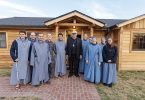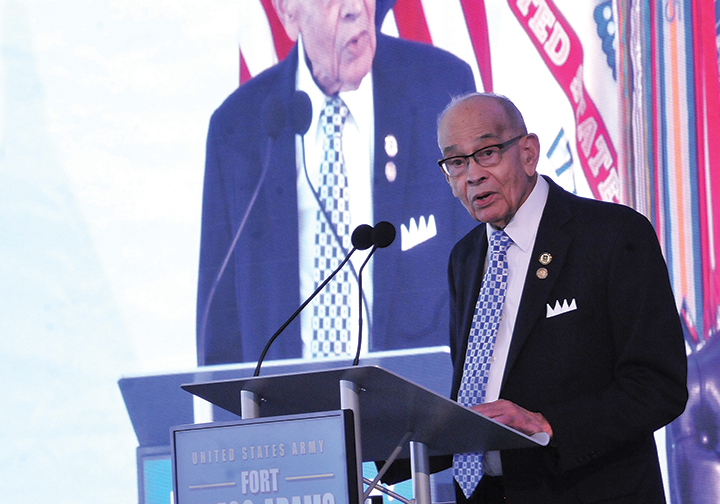
by Moira Cullings
moira.cullings@theleaven.org
FORT GREGG-ADAMS, Va. — By age 11, Arthur J. Gregg had faced the Great Depression, Jim Crow laws and the passing of his mother.
Yet he never let a single hardship stop him from chasing his dreams.
Lt. Gen. Gregg rose through the ranks during his more than 35 years of service in the U.S. Army, ultimately becoming a three-star general.
He was the first Black man to achieve an Army rank that high.
This year, Gregg defied the odds yet again. He was one of two soldiers whose names were chosen to replace the name Fort Lee.

On April 27, the Army base in Virginia was redesignated as Fort Gregg-Adams in honor of Gregg and Lt. Col. Charity Adams, who served during World War II.
“I was tremendously proud,” said Gregg of the honor.
Driven by relentless ambition and a positive mindset, the 95-year-old graduate of St. Benedict’s College in Atchison (now Benedictine College) is the only living person in U.S. history to have a military installation named after him.
Set up for success
Benedictine College president Stephen Minnis is elated to call Gregg a fellow Benedictine alum.
“It is clear why he is the first Black three-star general in U.S. Army history and why he is so highly thought of that a fort was named after him,” said Minnis.
Minnis attended the fort’s redesignation ceremony and spent time with Gregg at a lunch outing in June.
“General Gregg is the most gracious, hospitable, smartest, nicest gentleman I have ever met,” said Minnis.
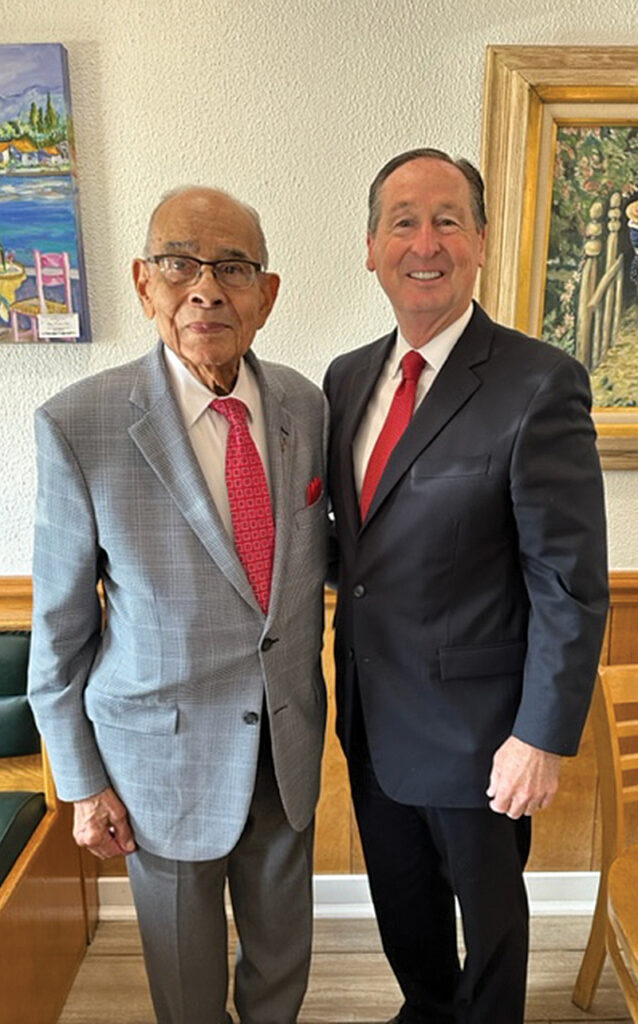
Gregg ended up at St. Benedict’s while attending the Command and General Staff College at Fort Leavenworth in 1963 and 1964.
According to Minnis, St. Benedict’s had been approached by the Army during the Vietnam War to create a Bootstrappers program so officers at the Command and General Staff College could earn a bachelor’s degree.
“Arthur Gregg was in that first class of Bootstrappers, graduating summa cum laude in business [administration] in 1964,” said Minnis.
Gregg commuted to Atchison with a fellow classmate from Fort Leavenworth to take courses during a summer and fall session.
“I embraced that opportunity,” said Gregg.
“I regarded all of my instructors as mentors,” he continued. “I felt that they were interested in me and interested in all of their students.
“And just by their example, I think it was a powerful influence — even for students in my category. I was then about 36 years old, and some of the instructors were even younger than I was.”
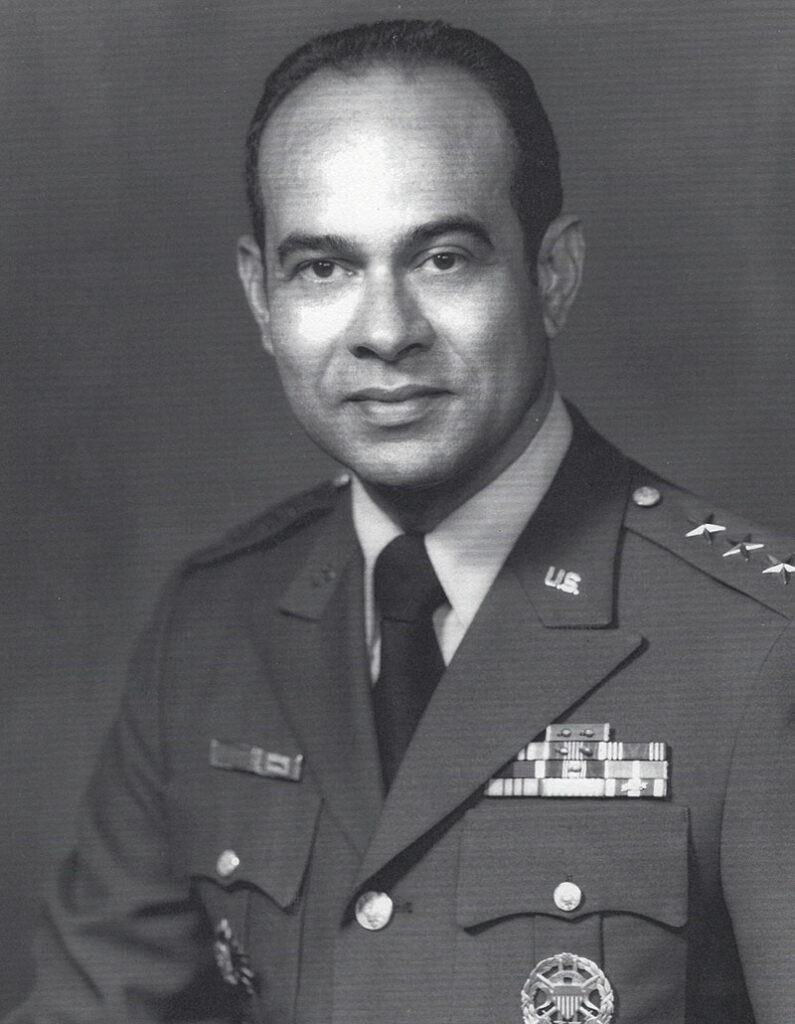
Gregg said the college cultivated the values instilled in him at a young age.
“I came to Benedictine College with the well-established history of working hard, doing my best, having respect for others, assisting others where I can and always showing proper respect,” said Gregg.
“I was motivated to do my very best in every undertaking,” he added, “and that was embedded in me from my childhood.”
Gregg believes his degree changed the course of his life.
“Benedictine College was a major part of my career and my story,” he said. “It gave me a critical credential to be successful in my career and in my life, and I’m very grateful for that.”
Overcoming the odds
Gregg has always made the most of the opportunities in his life.
He grew up in Florence County, South Carolina, and was the youngest of nine siblings.
The family owned 100 acres of land and livestock, and they grew and sold cotton and tobacco.
“This was during the Depression,” said Gregg, “and it was a tough time.”
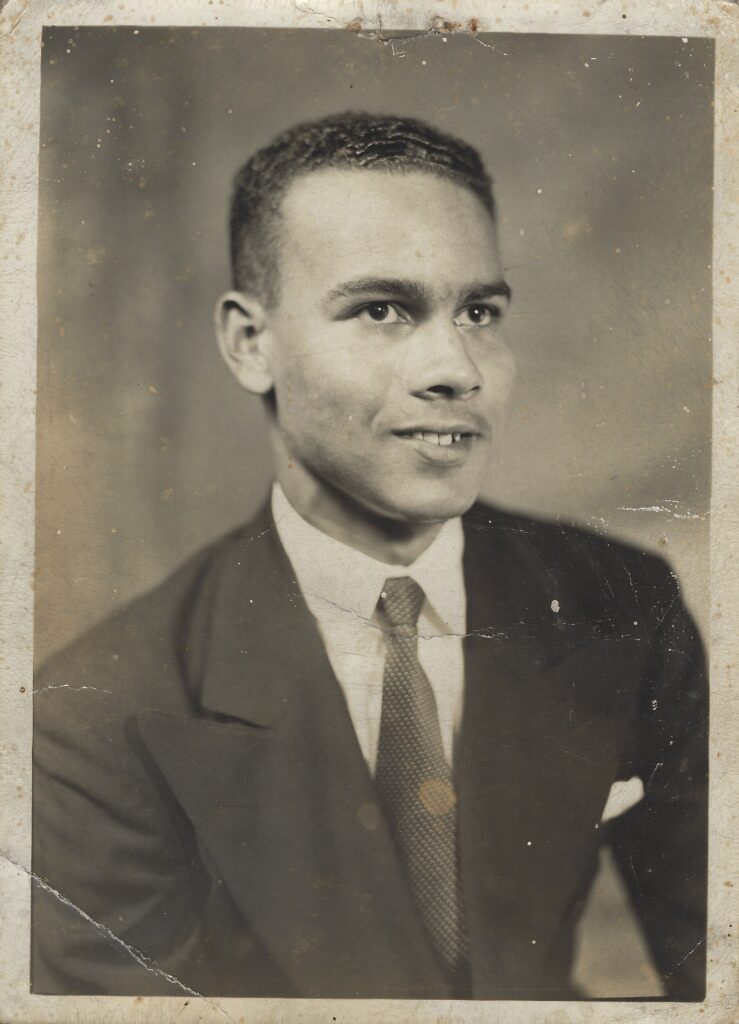
But the love from his family sustained him.
“It was a great family,” said Gregg. “My father and mother were the very best in my opinion.”
Gregg was raised Methodist, but his father converted to the Catholic faith, and at age 15, Gregg also joined the Catholic Church.
“I have always found the Catholic faith was one that helped me to live my life better,” said Gregg.
“It’s a very practical religion,” he added. “It does not appeal a lot to the emotions, but to practical life experience.
“I’ve enjoyed my Catholic experience.”
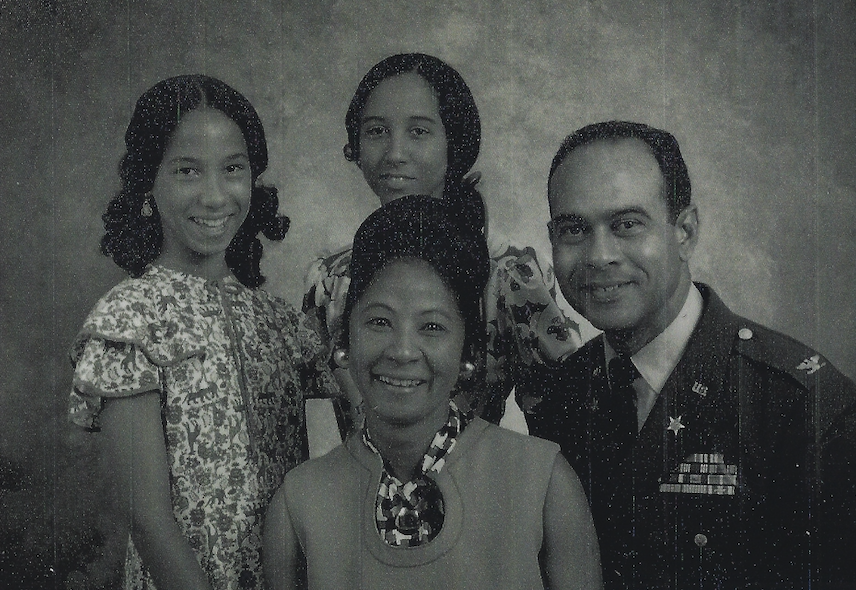
Aside from financial struggles, Gregg’s family encountered the additional burden of discrimination.
“The nearest high school was 10 miles away,” said Gregg. “Ten miles in those days was, for the most part, on dirt roads and unlike getting into a car today and driving down a major highway.”
The high schools in the county were only for white students, who also had access to bus transportation.
Fortunately for Gregg, his oldest brother and his family were living in Newport News, Virginia, at the time, and Gregg’s father sent him to live with them to attend Huntington High School.
Standard of excellence
When Minnis thinks about Gregg’s story, one piece stands out the most.
It was 1950 when Gregg, a newly commissioned officer, was assigned to Fort Lee.
“Although the Army was officially integrated in 1948,” said Minnis, “there were some remnants of discrimination on many forts — Fort Lee was one of them.
“Even though an officer, Gregg was not allowed in the whites-only Lee Officers Club at Fort Lee. This hurt his feelings tremendously as he thought he had earned the right as an officer to go into the officers club.”

Some 30 years later, Gregg’s retirement party was held in that very club, which is now called the Gregg-Adams Officers Club.
“He could have easily in 1950 harbored bitter thoughts,” said Minnis, “but instead he just worked harder and achieved things only a handful of people have achieved — becoming a three-star general.
“[It’s] truly a remarkable story.”
Gregg spent ample time at Fort Lee throughout his career, and he was, and continues to be, invited for ceremonial and special occasions.
His retirement ceremony was held there in 1981, and years later, he was accorded the honorary colonel of its quartermaster regiment.
Renaming reaction
When it comes to the renaming of Fort Lee, Gregg believes it was a long time coming.
“There were many people who obviously favored Fort Lee when it was named,” he said, “but there were also many people who felt that it was wrong to name a major Army base in honor of an officer who resigned his commission when the nation needed him most.
“And not only did he resign his commission, but he joined the enemy forces. And that did not send the proper message to the thousands of young soldiers and officers who would later serve at Fort Gregg-Adams.”

Gregg heard about the potential renaming of Fort Lee and discovered his name was being considered.
“But I was also aware that there were 34,000 names recommended to the commission for the nine bases being renamed,” he said.
“I was obviously more than proud and pleased when I was called and informed that the then-Fort Lee would be renamed Fort Gregg-Adams,” he added.
Gregg was also honored that his name is joined with Adams.
“She was a tremendous officer and a tremendous leader,” he said, “and I’m proud that my name is joined with hers at Fort Gregg-Adams.”

Gregg is grateful for how well-received the renaming has been.
“I feel that gives me some added responsibilities to always do the things that would bring credit not only to me,” he said, “but to the military base.
“I want that to be a part of the image of that base that inspires our soldiers and civilians to feel proud to be at the base and to serve our Army at this location.”
Looking ahead with hope
When it comes to the country’s future, Gregg is “tremendously hopeful.”
“I can tell you that the country has changed,” said Gregg. “Americans have changed — and changed for the better, to be more inclusive of all of our citizens.
“And I know sometimes you read the headlines of our newspapers, you look at the news in the evening, and there is clearly a lot of divisiveness.
“But I have great hope and expectation that we will work our way through those challenges and continue to be a better America for all Americans.”
Notable milestones in the career of Lt. Gen. Arthur J. Gregg
1946: Enlisted in segregated military
1947: Promoted to staff sergeant at 18 years old
1950: Commissioned as second lieutenant in the Army
1963-1964: Attended the Command and General Staff College at Fort Leavenworth
1964: Graduated from St. Benedict’s College with a bachelor’s degree in business administration
1966: Promoted to lieutenant colonel and commanded the 96th Quartermaster Direct Support Battalion
1967-1968: Selected to attend the Army War College
1972: Promoted to the rank of brigadier general and, following that, appointed commanding general of the Army and Air Force Exchange System in Europe
1976: Earned second star
1977: Elevated to lieutenant general, earning third star, and became director of logistics, Joints Chief of Staff



